Contents
- List of Russian Presidents : 1991-2022
- Presidents of Russia: Scenario Before 1991
- List of Presidents of Russia Year by Year
- Vladimar Putin :-
- From the Founders of the Moscow Tsardom to the current President :
- The Rurikids Ivan III (1462-1505) :
- Vasiliy III (1505-1533)
- Ivan IV the Terrible (1547-1584)
- Fyodor Loannovich (1584-1598)
- Boris Godunov (1598-1605)
- Share this:
List of Russian Presidents: 1991-2022 Check it Out :- Vladimir Putin is a Russian politician who has served as the President of Russia from 2000 to 2008, and again from 2012 to the present (2024). Prior to his presidency, Putin served as the Prime Minister of Russia under President Boris Yeltsin and as the head of the Federal Security Service (FSB), the main security agency of the Russian Federation and the successor agency to the Soviet Union’s KGB. Putin is known for his strongman image and centralization of power, as well as his actions in Ukraine and his relations with the West. He is also credited with stabilizing the Russian economy after the turbulent 1990s and overseeing a period of economic growth.
List of Russian Presidents : 1991-2022
- Boris Yeltsin (1991-1999)
- Vladimir Putin (2000-2008, 2012-2022)
- Dmitry Medvedev (2008-2012) Note: the above list is based on the knowledge cut-off date, the current president of Russia after 2022 is not included in the list.
Presidents of Russia: Scenario Before 1991
Before 1991, the President of Russia did not exist as a political position. The Soviet Union was a federal socialist state that was led by the General Secretary of the Communist Party of the Soviet Union (CPSU) and the government was headed by the Chairman of the Council of Ministers.
The following is a list of General Secretaries of the Communist Party of the Soviet Union from 1922 to 1991:
- Vladimir Lenin (1922-1924)
- Joseph Stalin (1922-1953)
- Nikita Khrushchev (1953-1964)
- Leonid Brezhnev (1964-1982)
- Yuri Andropov (1982-1984)
- Konstantin Chernenko (1984-1985)
- Mikhail Gorbachev (1985-1991)
The Chairman of the Council of Ministers (the equivalent of a Prime Minister) during that period were:
- Vladimir Lenin (1917-1924)
- Alexei Rykov (1924-1930)
- Vyacheslav Molotov (1930-1941)
- Joseph Stalin (1941-1953)
- Georgy Malenkov (1953-1955)
- Nikolai Bulganin (1955-1958)
- Nikita Khrushchev (1958-1964)
- Alexei Kosygin (1964-1980)
- Nikolai Tikhonov (1980-1985)
- Nikolai Ryzhkov (1985-1991)
Note that the list of General Secretaries and Chairman of the Council of Ministers is based on the knowledge cut-off date, it might be possible that the list is incomplete or not accurate.
List of Presidents of Russia Year by Year
- Boris Yeltsin (1991-1999)
- Vladimir Putin (2000-2008)
- Dmitry Medvedev (2008-2012)
- Vladimir Putin (2012-2018)
- Vladimir Putin (2018-2024)
Note that the list of Presidents is based on the knowledge cut-off date, it might be possible that the list is incomplete or not accurate. Also, the current president of Russia after 2024 is not included in the list.

Vladimar Putin :-
Vladimir Putin is a Russian politician who has served as the President of Russia from 2000 to 2008, and again from 2012 to the present (2024). Prior to his presidency, Putin served as the Prime Minister of Russia under President Boris Yeltsin and as the head of the Federal Security Service (FSB), the main security agency of the Russian Federation and the successor agency to the Soviet Union’s KGB. Putin is known for his strongman image and centralization of power, as well as his actions in Ukraine and his relations with the West. He is also credited with stabilizing the Russian economy after the turbulent 1990s and overseeing a period of economic growth.
| President | Years of Service | Duration & Term |
| Boris Yeltsin | 10 July 1991- 31 December 1999 | 8 years, 174 days |
| Vladimir Putin | 7 May 2000 – 7 May 2008 | 8 years, 128 days |
| Dmitry Medvedev | 7 May 2008 – 7 May 2012 | 4 years, 0 days |
| Vladimir Putin | 7 May 2012-2024 (term expires) | 9 years, 293 days |
| Alexander Rutskoy | 22nd September 1993- 4th October 1993 | Acting president during the 1993 constitutional crisis. |
| Viktor Chernomyrdin | 5th November 1996- 6 November 1996 | Acting president during Boris Yeltsin’s heart surgery. |
| Vladimir Putin | 31 December 1999- 7th May 2000 |
Acting president after Yeltsin’s early resignation |
From the Founders of the Moscow Tsardom to the current President :
The Moscow Tsardom was founded by Ivan the Great in the late 15th century, who expanded the principality of Moscow and created a centralized Russian state. Ivan the Great was followed by his son Ivan the Terrible, who was the first Tsar of Russia and expanded the Tsardom’s territory through wars of conquest. The following Tsars of Russia were:
- Ivan IV (Ivan the Terrible) (1547-1584)
- Fedor Ivanovich (1584-1598)
- Boris Godunov (1598-1605)
- False Dmitry I (1605-1606)
- Vasili IV (1606-1610)
- False Dmitry II (1607-1610)
- Michael I (1613-1645)
- Alexis I (1645-1676)
- Fedor III (1676-1682)
- Sophia Alekseyevna (regent) (1682-1689)
- Ivan V (1682-1696)
- Peter I (the Great) (1682-1725)
After the collapse of the Tsarist Russia, the Soviet Union was established in 1917 with Vladimir Lenin as its leader. The following is a list of General Secretaries of the Communist Party of the Soviet Union from 1922 to 1991:
- Vladimir Lenin (1922-1924)
- Joseph Stalin (1922-1953)
- Nikita Khrushchev (1953-1964)
- Leonid Brezhnev (1964-1982)
- Yuri Andropov (1982-1984)
- Konstantin Chernenko (1984-1985)
- Mikhail Gorbachev (1985-1991)
Then after the collapse of the Soviet Union in 1991, the Russian Federation was formed, and the following were the Presidents of Russia:
- Boris Yeltsin (1991-1999)
- Vladimir Putin (2000-2008, 2012-2024)
- Dmitry Medvedev (2008-2012)
Note that the list of General Secretaries, Chairman of the Council of Ministers and the Presidents of Russia is based on the knowledge cut-off date, it might be possible that the list is incomplete or not accurate and the current president of Russia after 2024 is not included in the list.
The Rurikids Ivan III (1462-1505) :
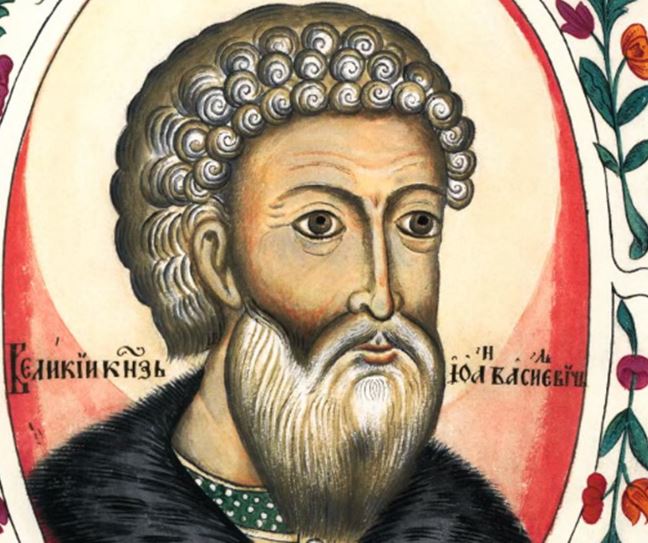
The Rurikids were a medieval dynasty that ruled over the Kievan Rus’, a federation of East Slavic tribes, from the late 9th century until the 16th century. The Rurikids were founded by Rurik, a Varangian prince who established himself as the ruler of Novgorod in 862. The Rurikids expanded their territory over time and built the city of Kiev, which became the capital of the Kievan Rus’.
The following are some of the notable Rurikid rulers:
- Rurik (862-879)
- Oleg (879-912)
- Igor (912-945)
- Sviatoslav (945-972)
- Vladimir I (980-1015)
- Yaroslav the Wise (1019-1054)
- Vsevolod I (1078-93)
- Vladimir II Monomakh (1125-1125)
- Andrey Bogolyubsky (1157-1174)
- Vsevolod III (1176-1212)
The Rurikids were eventually succeeded by the Grand Principality of Moscow, which was led by the Moscow branch of the Rurikid dynasty under Ivan I, Ivan III and Ivan IV ( Ivan the Terrible), and eventually the Tsardom of Russia was established, ending the Rurikids Dynasty.
Vasiliy III (1505-1533)
Vasili III Ivanovich was the Grand Prince of Moscow from 1505 to 1533. He was the son of Ivan III (Ivan the Great) and Sophia Paleologue. During his reign, Vasili III expanded the territory of the Grand Principality of Moscow, consolidating the power of the state. He also centralized the administration of the state and developed the legal system.
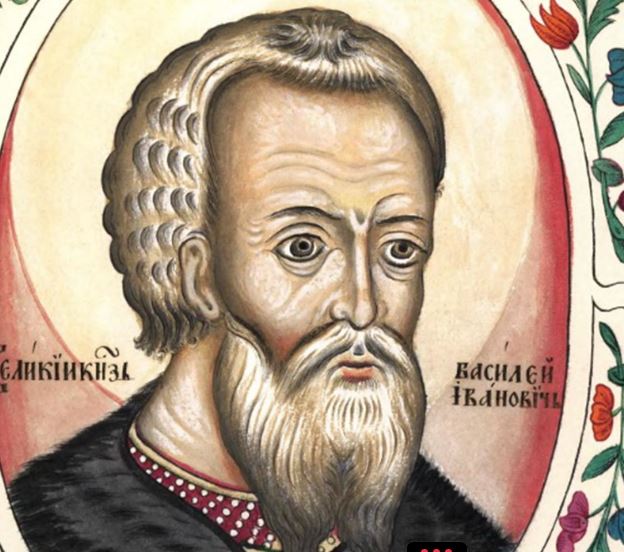
Vasili III is known for his military campaigns against the Kazan Khanate and the Grand Duchy of Lithuania. He conquered the Kazan Khanate in 1552, which expanded Moscow’s territory to the east and brought many new subjects under Moscow’s control. He also fought against the Grand Duchy of Lithuania and successfully annexed several territories, including the cities of Smolensk and Chernihiv.
In terms of Domestic Policies, Vasili III worked to strengthen the power of the centralized state. He improved the administration of the state by reorganizing the government’s departments and creating a standing army. He also strengthened the legal system by issuing a new legal code, known as the Sudebnik of 1550.
Vasili III also had a significant role in the cultural history of Russia, as he was a patron of the arts, literature and architecture. He also played a significant role in the spread of the Eastern Orthodox Church, and worked to establish the Moscow Patriarchate as the leading church in Russia.
Overall, Vasili III’s reign was characterized by the expansion of Moscow’s territory and the strengthening of the centralized state, which laid the foundation for the subsequent establishment of the Tsardom of Russia.
Ivan IV the Terrible (1547-1584)
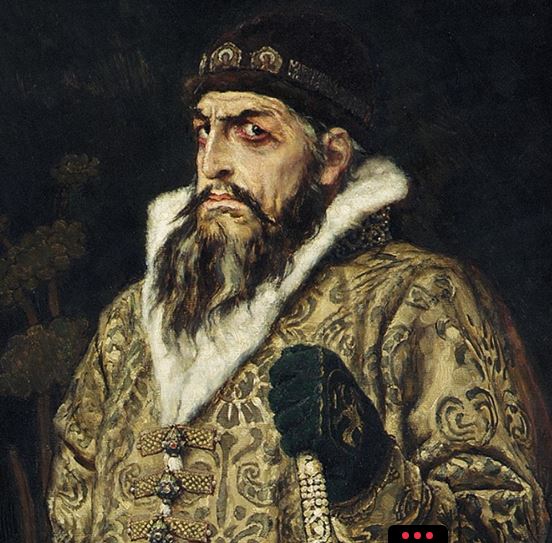
Ivan IV, also known as Ivan the Terrible, was the Grand Prince of Moscow from 1533 to 1547 and the first Tsar of Russia from 1547 to 1584. He was the son of Vasili III Ivanovich and was crowned as the Tsar of Russia at the age of 16, following the death of his father.
Ivan IV is known for his military campaigns, which expanded the territory of the Tsardom of Russia to include the Kazan Khanate, Astrakhan Khanate, and the Khanate of Sibir. He also fought against the Polish-Lithuanian Commonwealth and the Ottoman Empire, and expanded the Tsardom’s territory to include parts of modern-day Ukraine and Belarus.
Ivan IV is also known for his centralization of power and the development of the Russian autocracy. He reformed the government and created a standing army, the Oprichnina, which he used to assert control over the boyars (nobles) and to suppress dissent. He also introduced a new legal code, the Sudebnik of 1550, which further strengthened the centralized state.
Ivan IV is also known for his brutal repression of the nobility, which led to the mass execution and exile of many boyars and their families. He also implemented policies that led to the displacement and deaths of large numbers of peasants.
Ivan IV’s reign is also known for its cultural achievements, such as the construction of St. Basil’s Cathedral in Moscow, and the development of the Tsar’s court, which attracted many talented artists, writers, and scholars.
Overall, Ivan IV’s reign was marked by territorial expansion, centralization of power, and cultural achievements, but also by repression, violence and mass killings of the nobility and the peasantry.
Fyodor Loannovich (1584-1598)
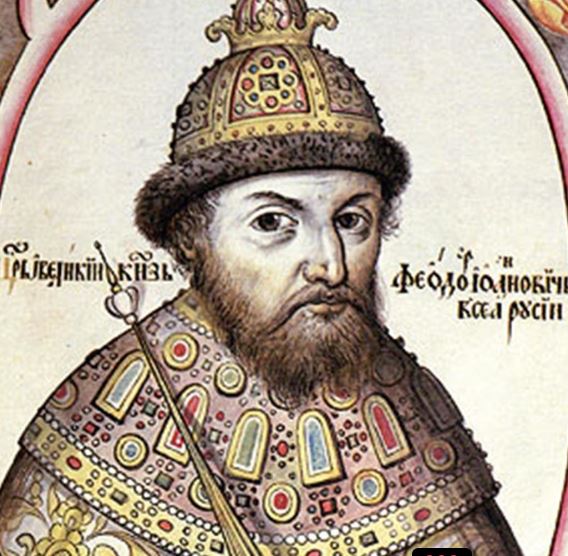
Fyodor Loannovich, also known as Feodor I, was the Tsar of Russia from 1584 to 1598, succeeding his father Ivan IV (Ivan the Terrible). He was the last Tsar of the Rurik dynasty.
Feodor was known for being weak-minded and ineffective as a ruler, and was unable to maintain the centralized power that his father had established. The state’s administration was left in the hands of powerful nobles, known as the boyars, who were able to exert a great deal of influence over the government. Feodor was also unable to deal with the various internal and external challenges facing the Tsardom, such as the ongoing wars with the Polish-Lithuanian Commonwealth and the Ottoman Empire, and the economic and social difficulties facing the country.
Feodor was also known for his piety and his interest in religious matters. He supported the Orthodox Church and built monasteries and churches, including the famous New Jerusalem Monastery. Feodor did not have any children, which led to a succession crisis. Boris Godunov, a powerful boyar and the brother-in-law of Feodor’s brother Ivan, was appointed as regent and later on became the Tsar of Russia. Feodor’s reign is generally considered a period of political and economic instability, and his inability to provide strong leadership contributed to the crisis that followed his death, which ultimately led to the Time of Troubles.
Boris Godunov (1598-1605)
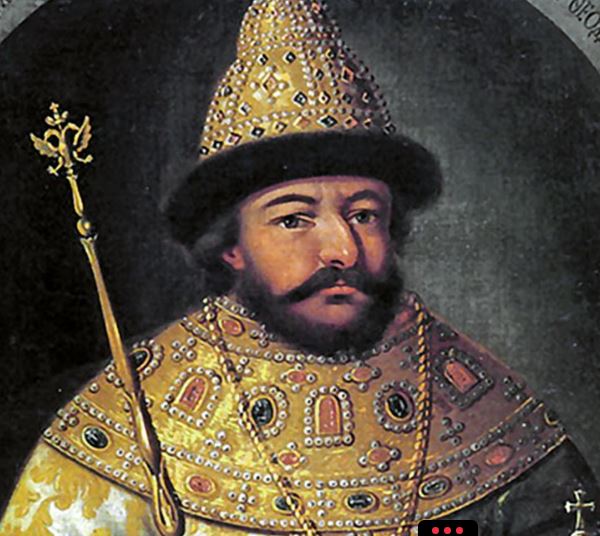
Boris Godunov was the Tsar of Russia from 1598 to 1605, succeeding Fyodor Ioannovich (Feodor I) as the last member of the Rurik dynasty had no children. He was a powerful boyar and the brother-in-law of Fyodor’s brother Ivan.
During his reign, Boris Godunov attempted to strengthen the centralized state and improve the administration of the government. He also continued the wars with the Polish-Lithuanian Commonwealth, but was ultimately unable to expand the territory of the Tsardom.
Boris Godunov also faced a series of natural disasters, including a severe famine in 1601-1603, which led to widespread starvation and increased discontent among the population. He also faced a series of popular uprisings, which were sparked by the economic crisis and the discontent among the lower classes.
Despite his efforts to stabilize the situation, Boris Godunov’s rule was marked by growing unrest, popular discontent, and political instability. These factors ultimately led to the emergence of a pretender, a man claiming to be the son of Ivan the Terrible, Dmitry, and the Time of Troubles, a period of political turmoil and civil war that lasted until the establishment of the Romanov Dynasty in 1613.
Boris Godunov’s rule and his death were also the subject of several literary works, including the play “Boris Godunov” by Alexander Pushkin, and the opera “Boris Godunov” by Modest Mussorgsky.

